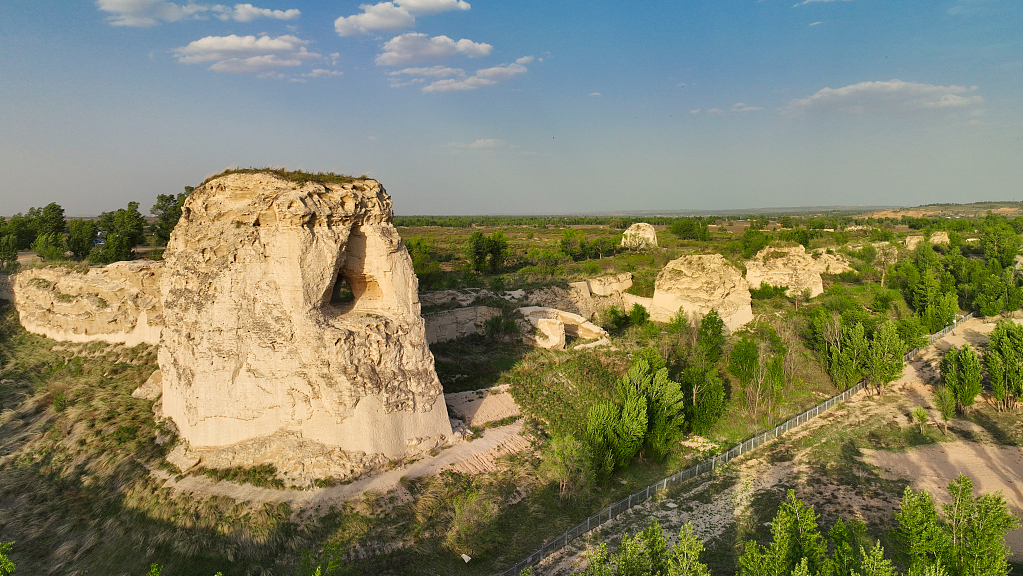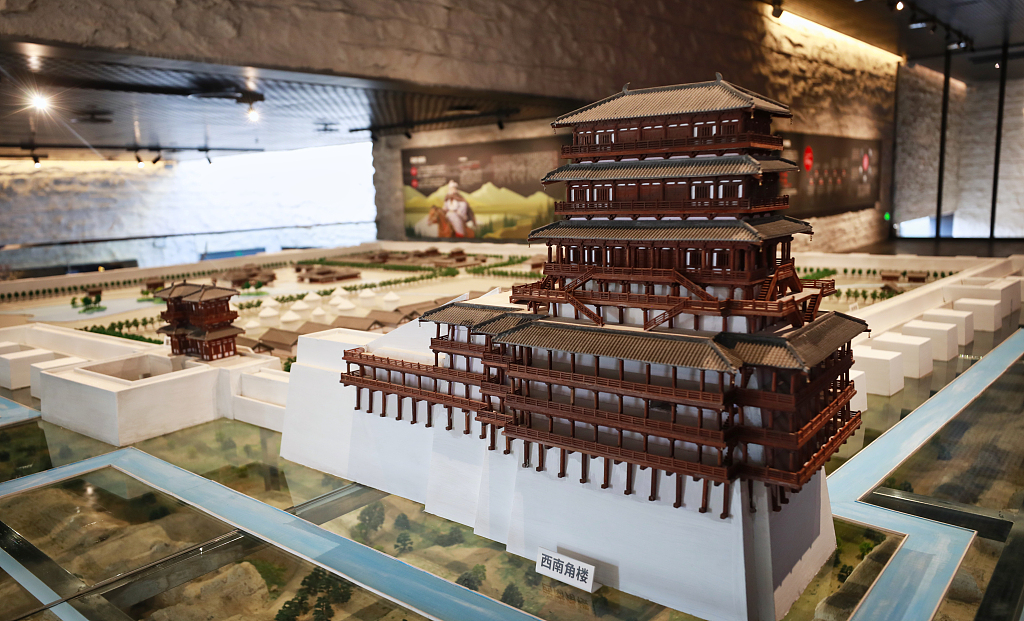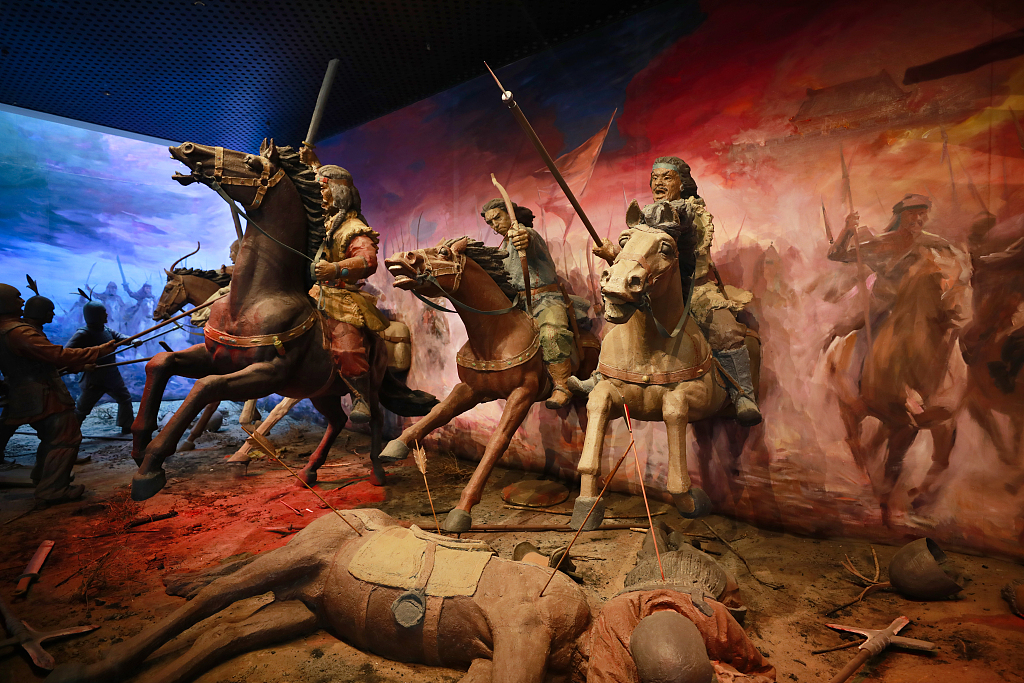
The Tongwancheng city ruins situated in Jingbian County, Shaanxi Province on May 12, 2023 /CFP
The Tongwancheng city ruins situated in Jingbian County, Shaanxi Province on May 12, 2023 /CFP
The National Archaeological Site Park of the Tongwancheng city ruins has been officially opened to the public, providing a fascinating glimpse of the ancient city with a history spanning over 1,600 years.
Situated in Jingbian County, northwest China's Shaanxi Province, the Tongwancheng city ruins represent the only remaining vestiges of the capital city of the Huns, also known as the Xiongnu, an ancient nomadic tribe in China.

The exhibition inside the Tongwancheng City Ruins Museum in Jingbian County, Shaanxi Province on May 12, 2023 /CFP
The exhibition inside the Tongwancheng City Ruins Museum in Jingbian County, Shaanxi Province on May 12, 2023 /CFP
Through meticulous archaeological excavations, the site has revealed rammed-earth architectural remnants, including an outer city, an eastern city, and a western city. These structures showcase the ingenuity of urban planning, defense systems, architectural design, and material applications during that period.
The Tongwancheng city ruins stand as a testament to the fusion of steppe culture and farming culture, bearing vital empirical evidence for the study of the historical and cultural aspects of the area and a bygone era.

The exhibition inside the Tongwancheng City Ruins Museum in Jingbian County, Shaanxi Province on May 12, 2023 /CFP
The exhibition inside the Tongwancheng City Ruins Museum in Jingbian County, Shaanxi Province on May 12, 2023 /CFP
Spanning an expansive area of 42.6 square kilometers, the National Archaeological Site Park of Tongwancheng features a meticulously-planned spatial structure known as "one axis, two belts, three circles."

The Tongwancheng city ruins situated in Jingbian County, Shaanxi Province on May 12, 2023 /CFP
The Tongwancheng city ruins situated in Jingbian County, Shaanxi Province on May 12, 2023 /CFP
The primary axis aligns with the historical pattern of the site, facing southeast. The "two belts" encompass the scenic oasis landscape along the Wuding River Valley. The "three circles" encompass the exhibition circles showcasing the desert grassland environment, the outer city site, and the inner-city palace site. The core visiting area of the park's initial phase covers approximately 3.2 square kilometers and houses key attractions such as the Tongwancheng City Ruins Museum, a visitor service center, an archaeological work station, and landscape projects.
The museum serves as a hub for cultural relic exhibitions, cultural tourism experiences, site preservation, popularization of natural sciences, and academic exchanges.